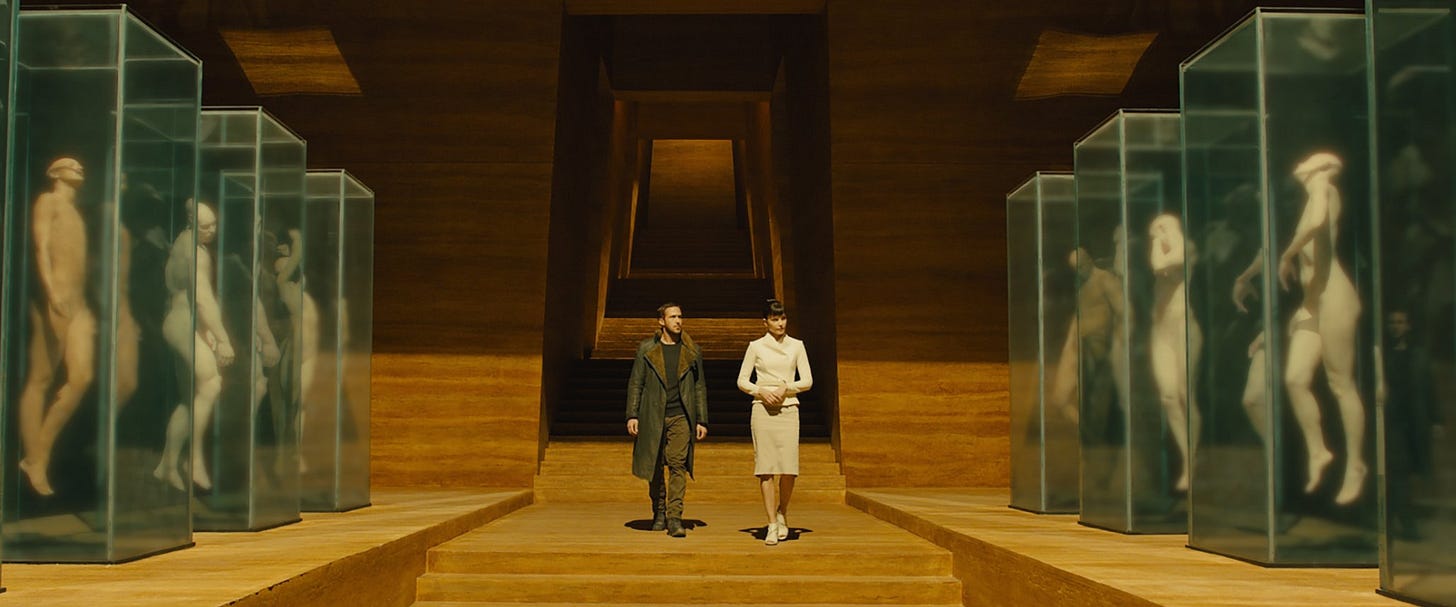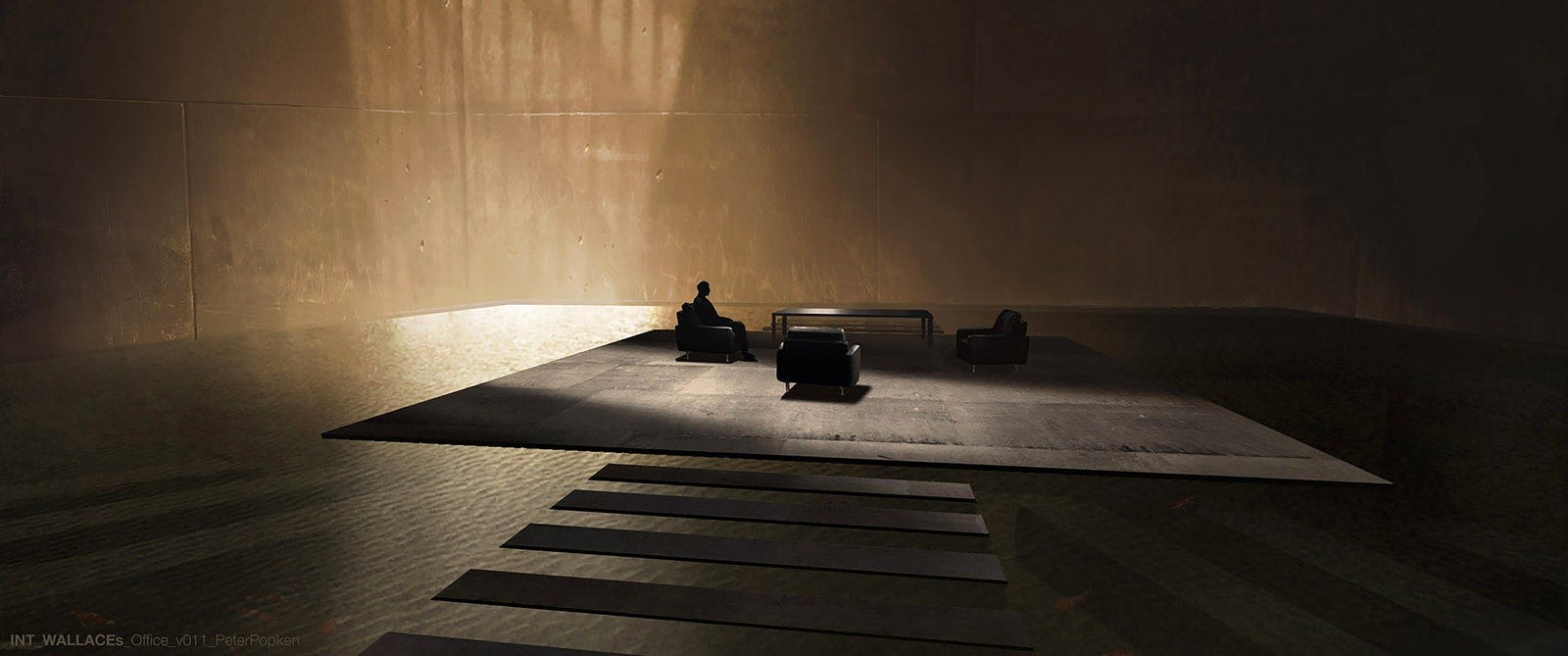Hey Internet friends,
this week I’d like to kick off a new theme that would stay with us for a while. I studied design at uni and, since I studied interior the first year and moved to visual design, I always felt this intrinsic approach between audio-visual and architecture.
The juxtaposition of a specific architectural style and cinematographic genre has always fascinated me from a storytelling point of view, where the set design could completely distort or reinforce the audience's point of view.
Architecture in cinema isn't just about creating a backdrop, it's a narrative tool. It sets the tone, defines the world, and shapes its characters. From eerie corridors that seem to have a life of their own, to futuristic skylines that define an entire genre, architecture plays a starring role in some of the most memorable films ever made.
For this first episode, I decided to focus on 4 movies that are peculiar and iconic in their being completely different in the intention and social context they’ve been written and directed.
Suspiria, by Dario Argento (1997), where interiors reflect the character’s inner world
Alien: Covenant, by Sir Ridley Scott (2017), where perfect architecture reveals a fragile awareness of human isolation in the universe
The Fall by Tarsem Singh (2006), where the environment is used to amplify the director’s creativity
Blade Runner 2049 by Denis Villeneuve (2017), is the manifestation of humanity’s failure to live in harmony with nature.
Suspiria by Dario Argento, 1997
The psychological landscape
One of my favorite movie directors is Dario Argento, known for his work in Italian horror (or Giallo) films, who often uses architecture to enhance the surreal and dreamlike quality of his stories. In movies like Suspiria and Inferno, the buildings become characters, with grand, sometimes grotesque facades and labyrinthine interiors.
For Argento, architecture serves as a psychological landscape, his characters often find themselves trapped in buildings with no clear escape, where the walls seem to close in.
The opulent, sometimes gaudy interiors play with light and shadow, creating a heightened sense of anxiety and disorientation.
In Suspiria, for instance, the dance academy’s Art Nouveau and Gothic features create a beautiful and terrifying world.
This use of elaborate set design is a staple of Argento’s visual storytelling, where architecture mirrors the characters' inner turmoil and the sense of inescapable dread that permeates his films.
Argento's masterful use of color further enhances the impact of the architecture, particularly in Suspiria, where the bold, saturated palette elevates the otherworldly feel of the sets. His use of highly stylized reds, blues, and greens transforms architectural spaces into canvases of pure emotion.
These intense colors heighten the surrealism and theatricality of the film, creating an unsettling environment where the visual beauty becomes intertwined with fear and horror.
This commitment to using bold, unconventional color choices in architecture and interiors has left a lasting influence on horror cinema, showing how design can push the boundaries of genre storytelling.
Alien: Covenant by Sir Ridley Scott, 2017
Cold, clinical, and claustrophobic
In Alien: Covenant, architecture becomes an integral part of the film’s mood. The ship's interior is sterile and minimalist, evoking a sense of unease and confinement. The clinical design of the spacecraft contrasts sharply with the wild, untamed nature of the planets they visit.
Here, the coldness of the futuristic architecture underscores the inhuman, often brutal environment the crew faces. It reminds us how alien spaceships, while technically advanced, lack warmth or comfort, reflecting the isolation and danger of the crew’s journey.
The film’s architectural choices extend beyond functionality, symbolizing humanity’s fragile existence in the vastness of space.
Drawing on the existential themes in Alien: Covenant, the sleek, impersonal design of the Covenant ship reflects a deeper philosophical tension between human vulnerability and the infinite unknown.
The sterile, almost dehumanizing spaces reflect the disconnect between humans and the alien environments they traverse, echoing humanity’s hubris in trying to master nature through technology. The artificial, controlled environment of the spacecraft contrasts with the primal, chaotic nature of the alien planet, highlighting the inevitable clash between creation and destruction.
These sterile spaces also act as a metaphor for humanity's quest for perfection and control yet, as the film reveals, this architecture of precision is ultimately fragile, easily penetrated by the chaos and terror lurking in the unknown.
The vast, empty halls and clinical, lifeless design reflect an overarching theme of existential dread, as the architecture becomes a reminder of human isolation in an indifferent universe.
The Fall by Tarsem Singh, 2006
A dreamlike exploration of global architecture
In The Fall, architecture takes center stage in a truly global sense. Directed by Tarsem Singh, the film weaves an intricate narrative through a series of breathtaking, real-world locations that span continents and eras. What makes The Fall truly remarkable is its reliance on real architecture, no CGI was used in constructing the film’s visual world. This decision grounds the film's fantastical elements in a tangible reality, offering a cinematic experience where each architectural setting becomes a character in its own right.
The film’s aesthetic is shaped by iconic structures such as India’s Chand Baori stepwell, the Hagia Sophia in Istanbul, and the Alhambra in Spain, among many others.
Each location amplifies the narrative, with architecture serving not merely as a backdrop but as a visual metaphor for the film’s themes of myth, imagination, and escapism.
The vast, open courtyards, grandiose palaces, and otherworldly structures blur the line between reality and fantasy, creating an ethereal atmosphere that supports the film’s fairy-tale narrative.
What is striking about the architecture in The Fall is how it enhances the surreal nature of the story. Each building, whether ancient or monumental, is presented in a way that feels timeless and dreamlike, reflecting the inner journey of the characters.
As the characters move through these spaces, the audience is invited to explore not just physical locations, but also the emotional and symbolic resonance that these structures embody.
The film’s use of real, iconic architecture adds layers of depth to its narrative, emphasizing the importance of space in shaping human experiences. By choosing these visually striking and culturally significant locations, The Fall becomes a visual ode to the power of architecture to transcend time and place, echoing the film’s central theme of imagination as a means of escape.
The architecture itself tells stories, of history, grandeur, and the connection between human creativity and the built environment.
Blade Runner 2049 by Denis Villeneuve, 2017
The dystopian vision
Few films have influenced the portrayal of futuristic architecture as much as Blade Runner and its sequel, Blade Runner 2049. In these films, architecture is not just a backdrop but a symbol of societal decay and technological dominance. The sprawling, dystopian cityscapes, with their towering monoliths and suffocating urban environments, reflect a world where humanity struggles to find space and meaning.
While Blade Runner 2049 is often associated with brutalist architecture, the reality is more nuanced. The film blends elements of brutalism, defined by its raw concrete structures and imposing mass, with other architectural styles, creating a hybrid aesthetic that reflects the film's themes of isolation, power, and environmental collapse.
The sprawling, monolithic buildings with stark, minimalist exteriors echo brutalism’s monumental scale, but they are layered with futuristic, high-tech elements that emphasize the film’s dystopian vision.
This mixture of styles speaks to a future where technological advancements have pushed humanity to the brink, leading to both the physical and moral degradation of society.
The dystopian cityscapes in Blade Runner 2049 also draw attention to the idea of architecture as a reflection of environmental collapse. The film portrays a world where natural resources have been depleted, and the built environment is the only space left for human habitation.
The brutal, decaying structures, often drenched in rain or covered in sand, serve as constant reminders of this environmental degradation. Architecture in this world is not just oppressive in its scale, it’s a manifestation of humanity’s failure to live in harmony with nature.
Ultimately, Blade Runner 2049 presents a future where architecture symbolizes the tension between human ambition and its consequences. The massive, oppressive buildings may suggest brutalist influences, but they also point to a fractured society, where the grandeur of the built environment is contrasted with the disintegration of human life. These architectural choices deepen the film’s exploration of themes like identity, control, and the boundaries between the natural and the artificial.
Ouch! is meant to be collaborative, free, and independent from any trend, so I’d like to hear from you about potential topics of discussion.
Feel free to drop a DM to @lux.aeon on Instagram with any suggestion regarding art, design, or something that triggered your mind and deserves attention, or leave a comment here.
Stay hydrated, see you soon 🦖


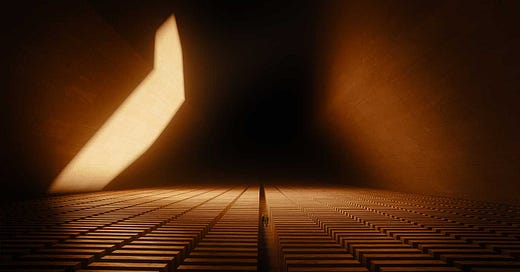


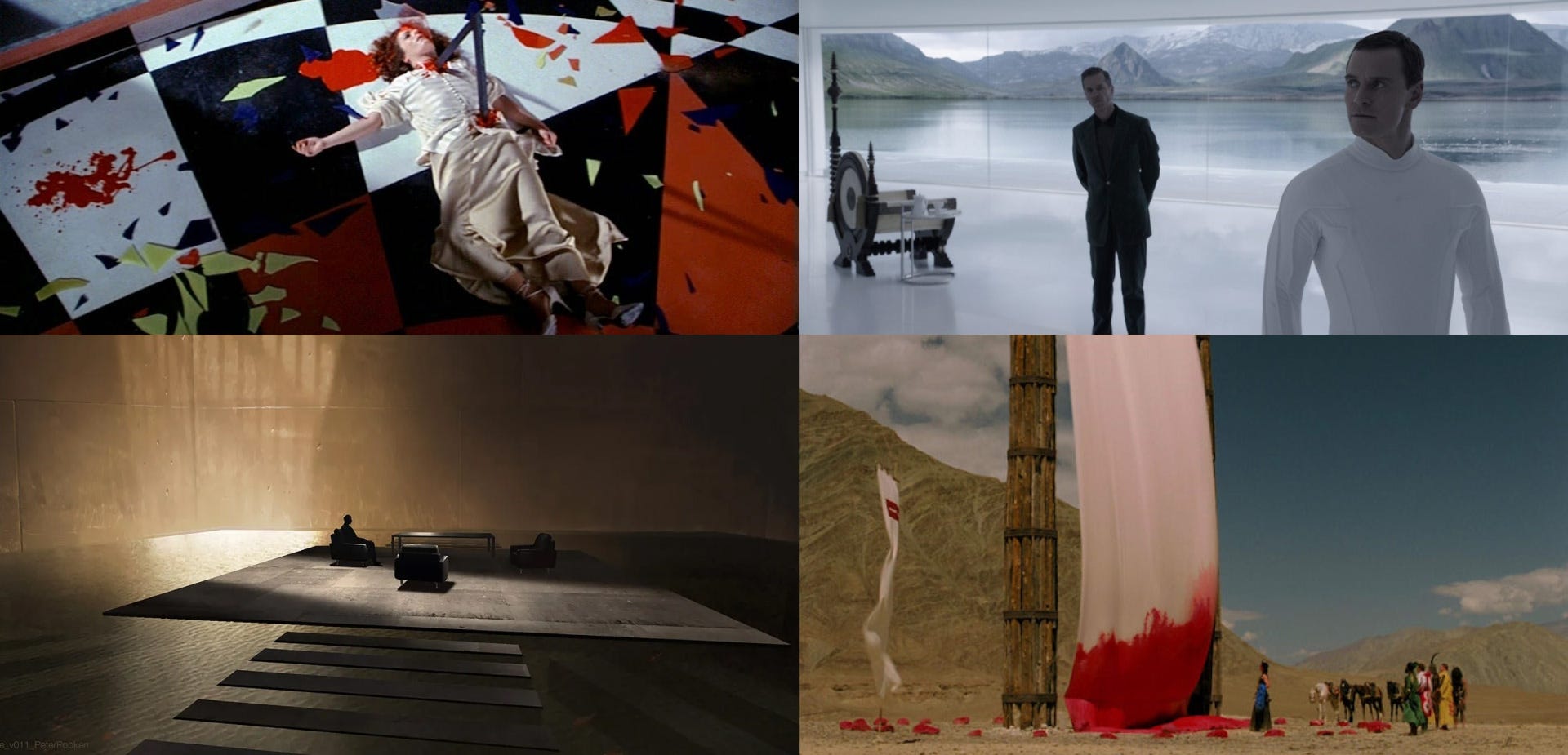
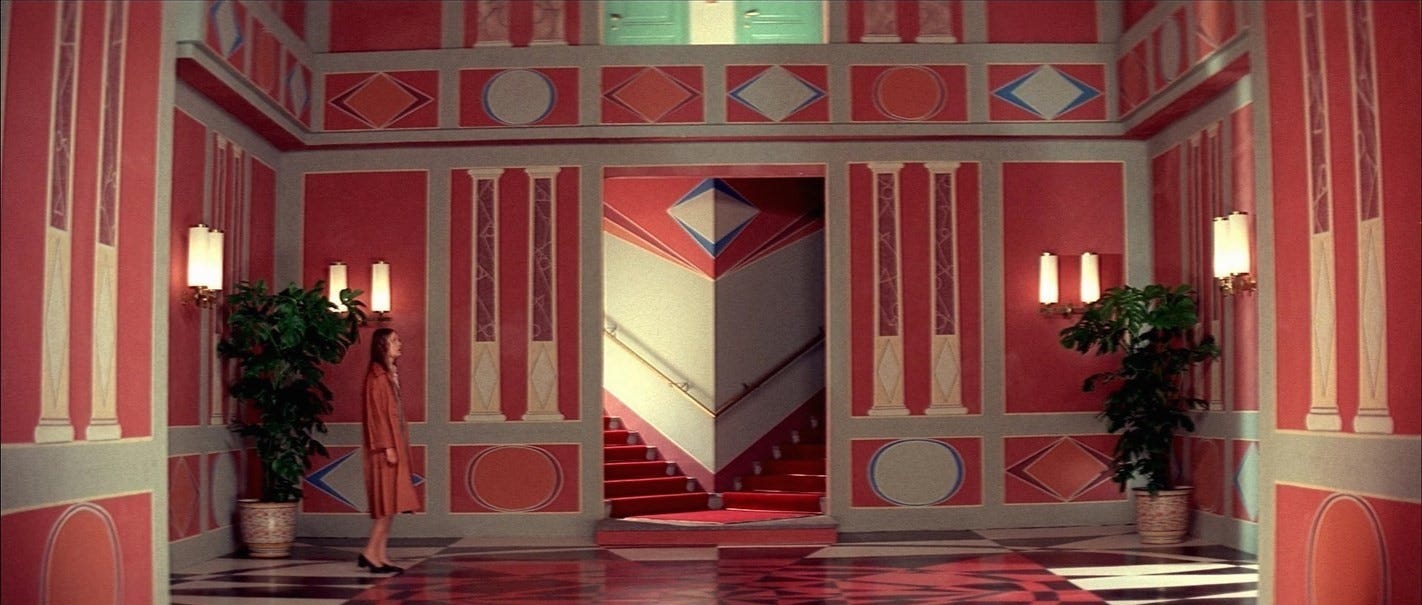
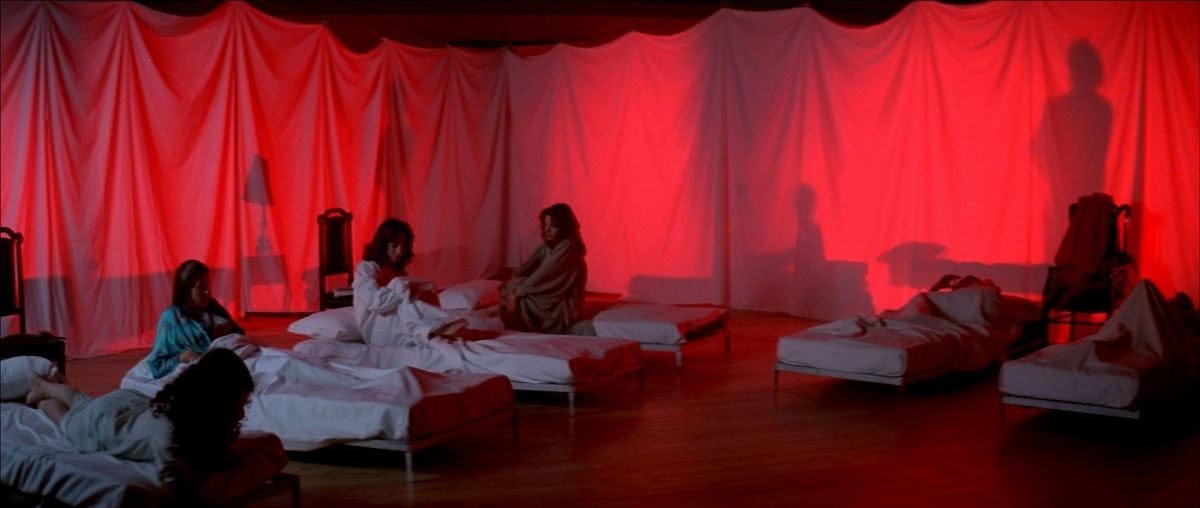
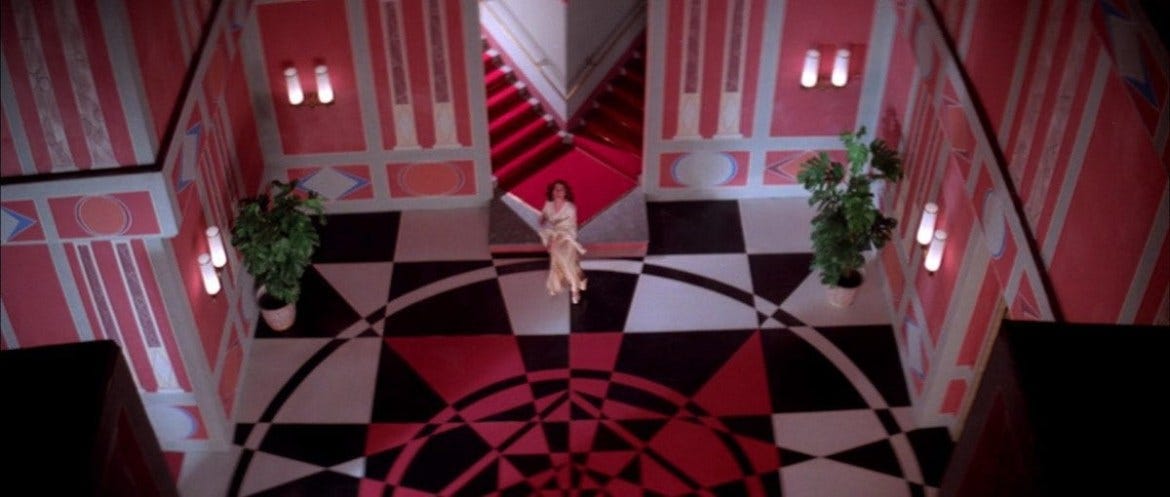
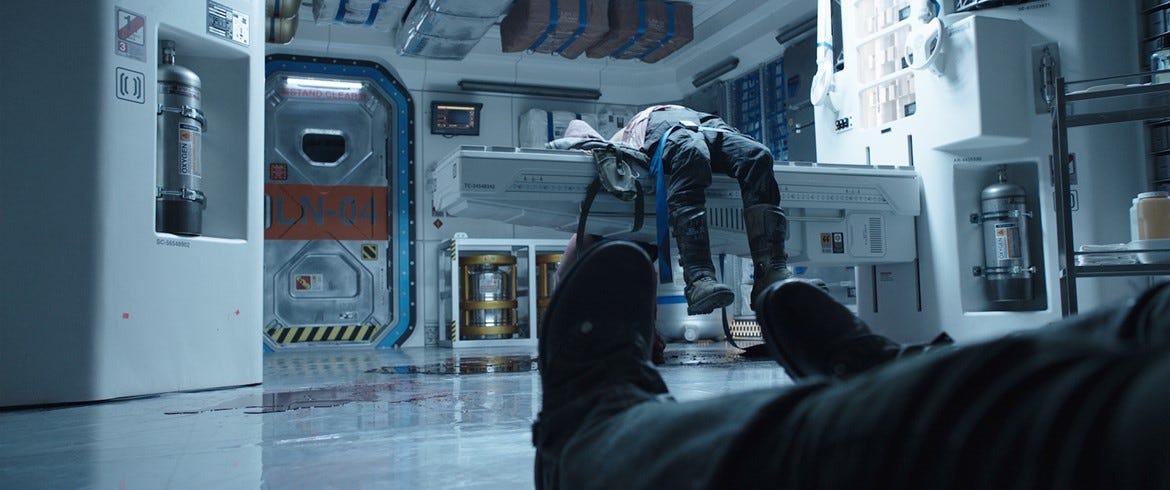
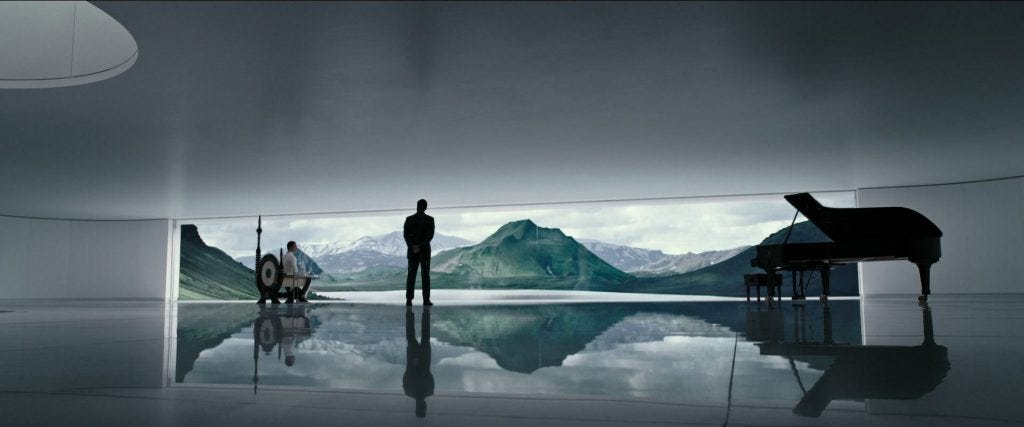
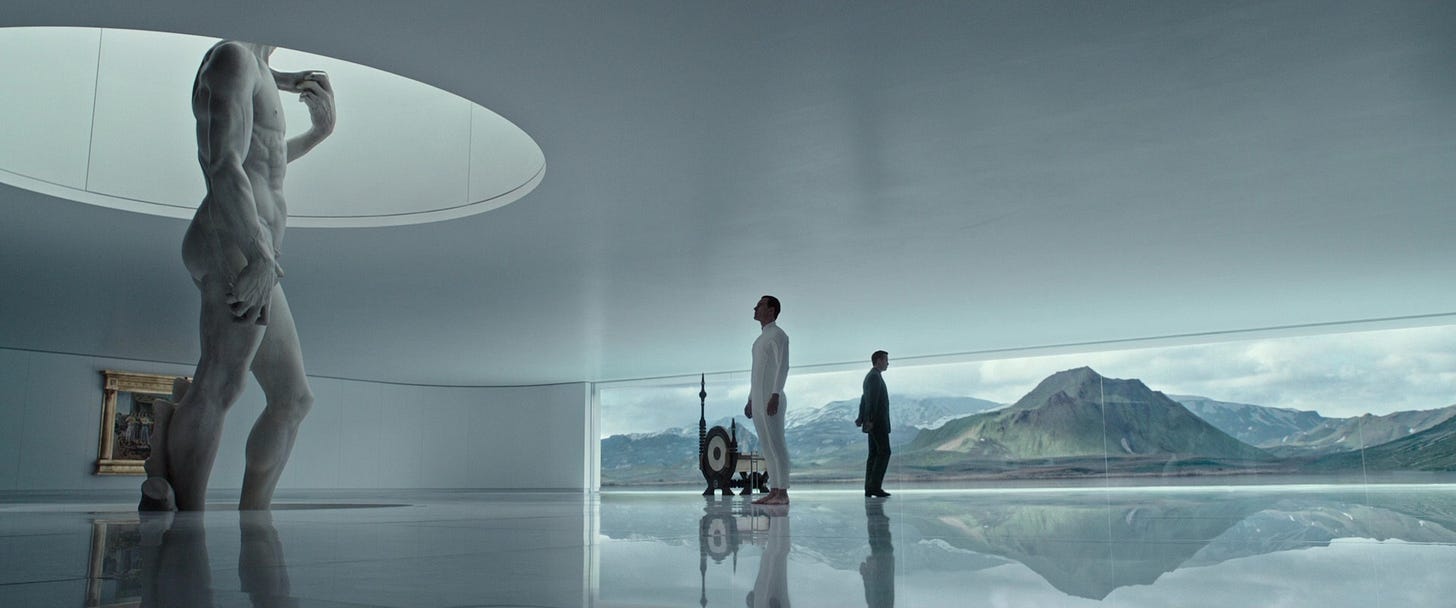

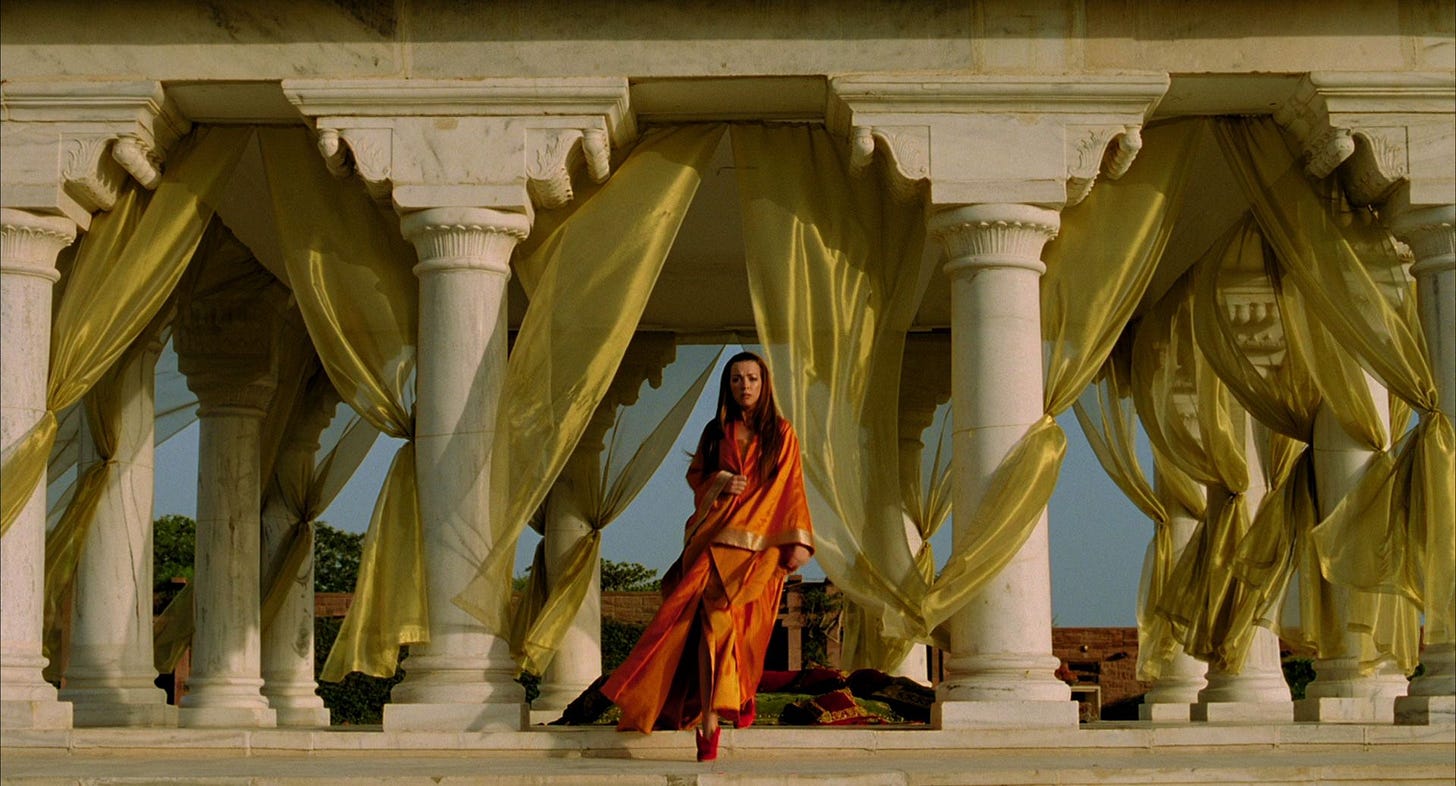
![The Fall – [FILMGRAB] The Fall – [FILMGRAB]](https://substackcdn.com/image/fetch/w_1456,c_limit,f_auto,q_auto:good,fl_progressive:steep/https%3A%2F%2Fsubstack-post-media.s3.amazonaws.com%2Fpublic%2Fimages%2F7ce19182-f119-4586-a117-85d41fb0d50d_1023x555.jpeg)

